Manitoba Railway History And Fallout Bunker At Miami Railway Station Museum
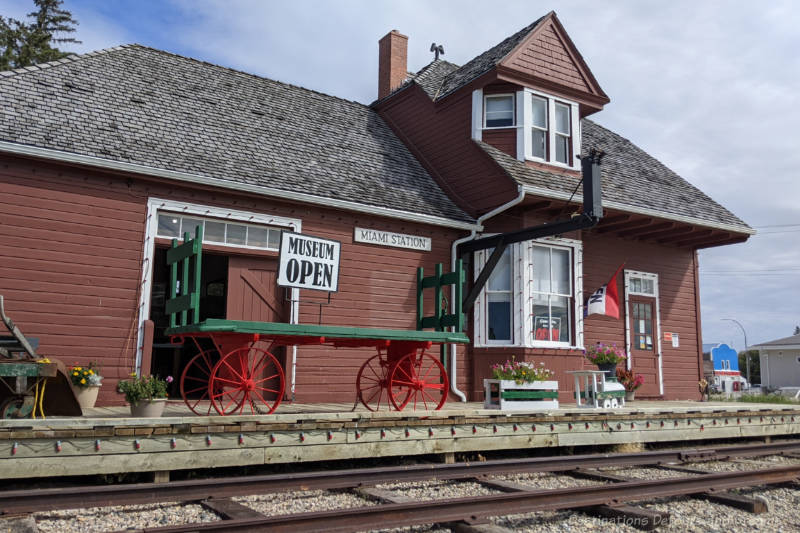
A former railway station in Miami, Manitoba, Canada showcases railway history and a 1960s-era fallout reporting shelter
The Miami Railway Station Museum in Miami, Manitoba, Canada is housed in the original railway station building in its original location. On the museum grounds, you’ll also find a 1914 caboose and a restored 1960s-era fallout reporting shelter.
Miami is located approximately 110 kilometres (68 miles) southwest of Winnipeg, Manitoba. It was originally named Thompsonville after early settler and first postmaster William Thompson, but was renamed Miami about the time the railway arrived.
The railway station was built in 1889 for the Northern Pacific and Manitoba Railway, a small railway company formed to push back on the monopoly Canadian Pacific had on freight rates. It was taken over by Canadian Northern about a decade later. The upheaval of World War I drove that company and others into bankruptcy. The Canadian government consolidated struggling railway lines into the Canadian National Railway. The Miami station flew under that banner until it closed in the 1970s.
Station House
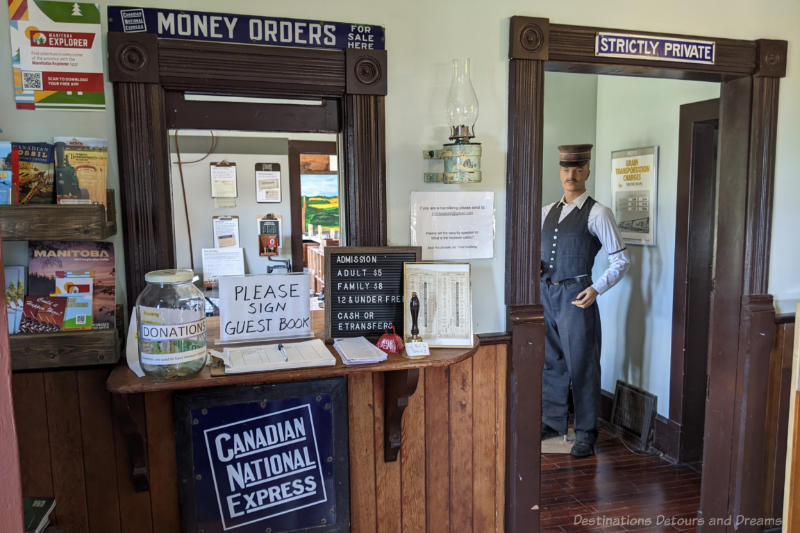

Signage in what would have been the waiting room of the station house relates interesting stories from railway history, such as the shipping of Eaton catalogue homes. From the early 1900s until the 1930s, catalogue homes were popular in rural western Canada. Shipped by rail from British Columbia, the package included lumber, nails, paint, shingles, and everything else you needed to construct the home. The Eaton Mail Order building in Winnipeg displayed assembled homes for potential buyers to view when they came to the city.
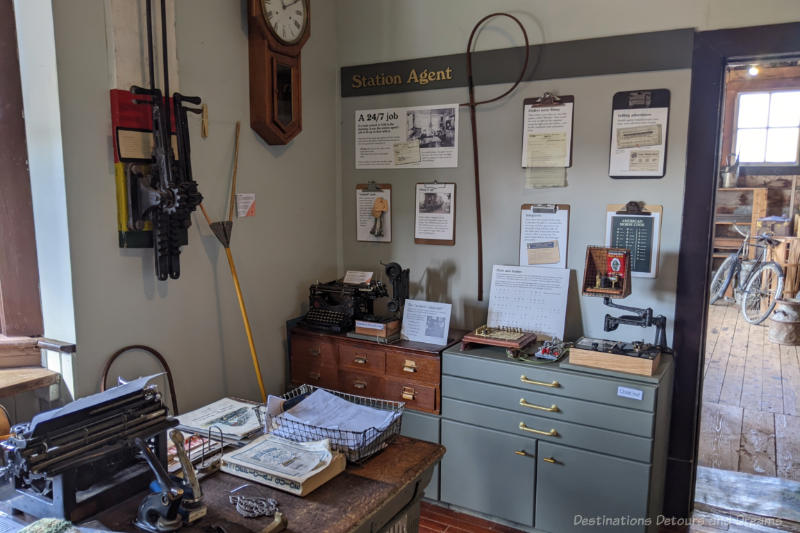
The station agent’s office contains communication and other equipment as well as information about the various railway jobs including that of the station agent. The station served as a hub of information keeping the agent busy around the clock. The agent would also be in charge of selling train tickets, booking boat passages, and hotel rooms.

The south side of the freight shed has been set up to show its original atmosphere with a luggage dolly, scales, lanterns, and tools.
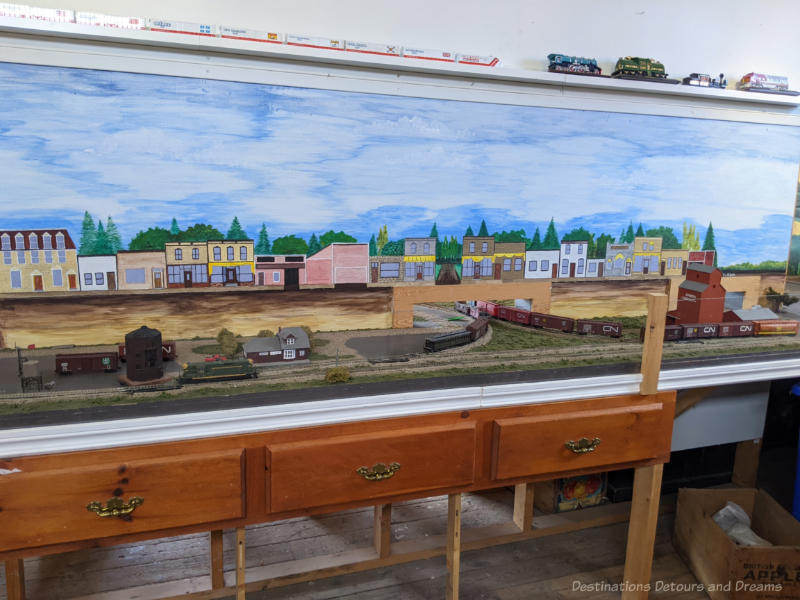
The north side of the freight shed is now a display area showing paintings, maps, and a model railway.
The building was not only the station. It was also the station agent’s living quarters. The living quarters are set up as they might have been for a family. The décor would have varied over the years depending on the situation of the station agent. If he was single, he may have rented out rooms. Married men were generally preferred for the job because they were considered more responsible. Families also sometimes rented out spare rooms.
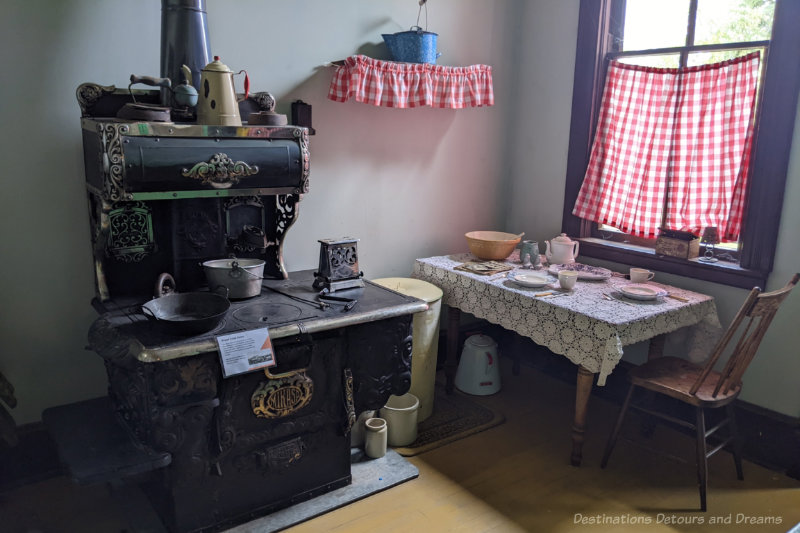
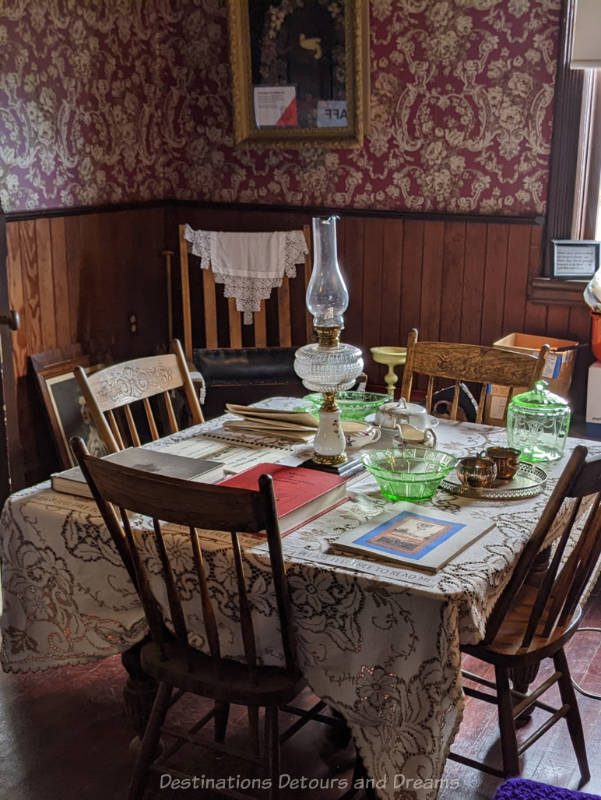
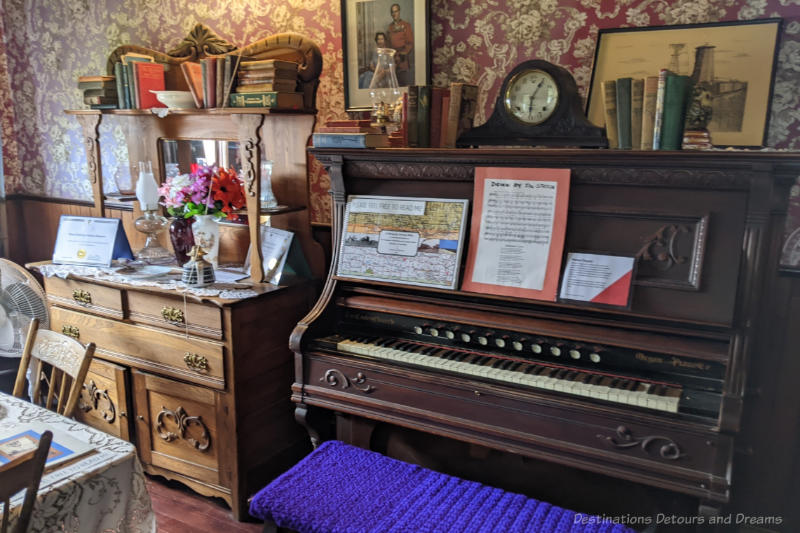
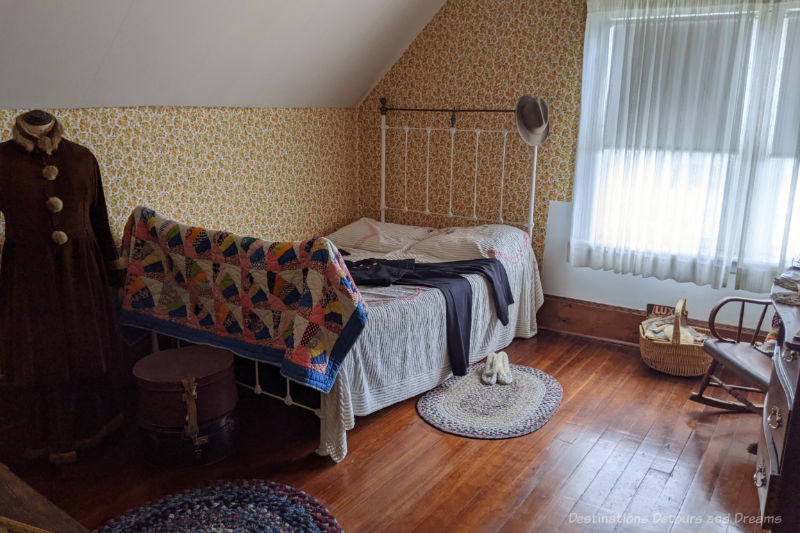

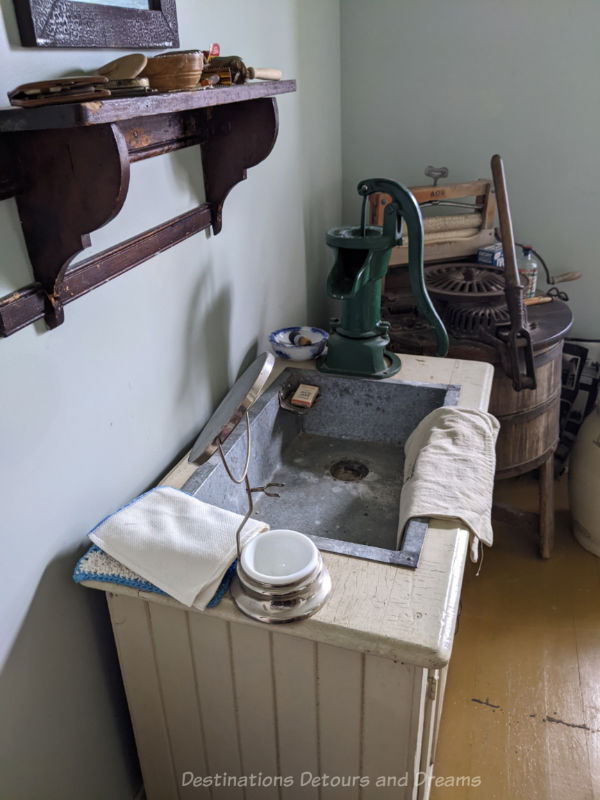
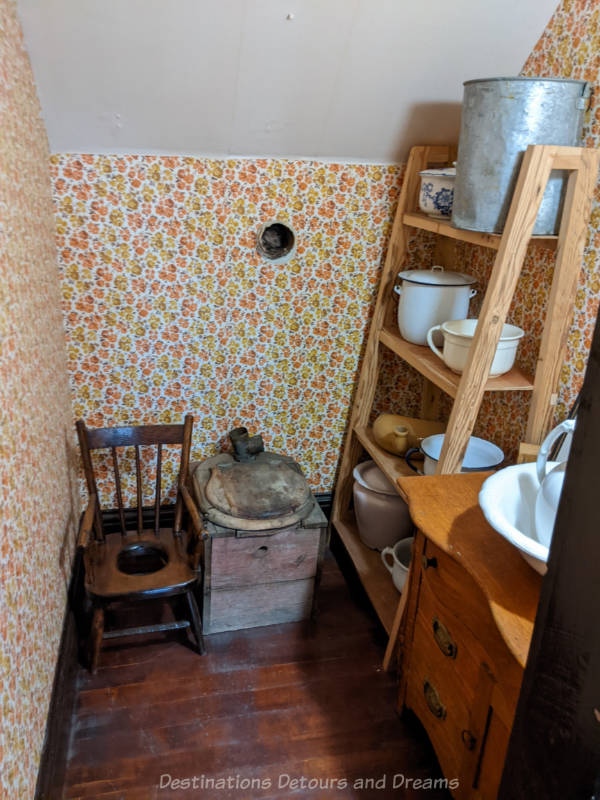
The washroom, located upstairs with the bedrooms. held the family’s chamber pots. The toilet in this room would typically only be used at night. Outhouses were still used and preferred because they didn’t have to be cleaned out and left no odor in the house.
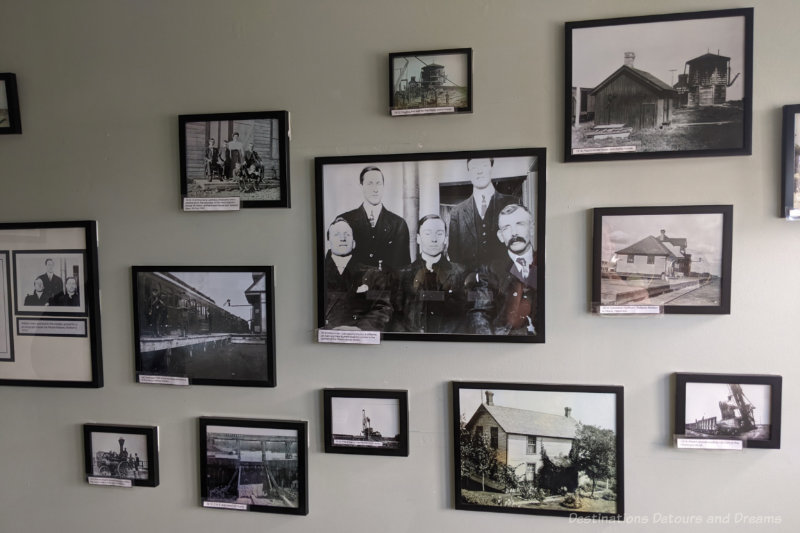
An upstairs room that was once rented out to a man named William Herr is now the William Herr Display Room. Herr had previously lived in the pump house and used a boxcar to construct his bed. He was the first man in Miami to own a camera. Photos taken by him hang on the wall and provide a glimpse of Miami in the 1910s.
The Caboose
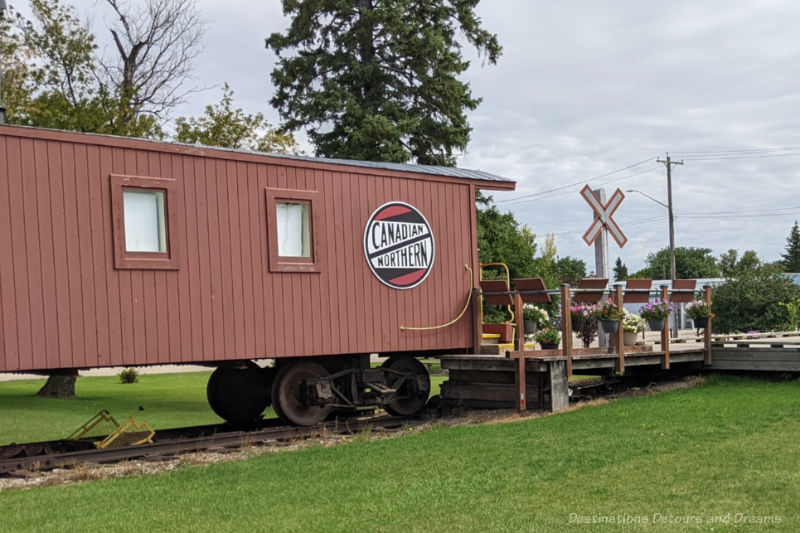
A caboose built in 1914 at the Canadian Pacific Railway’s Angus Yards in Montreal, Quebec sits on museum grounds. Signage outside and inside the caboose provides information on the history of the caboose and the roles of crew on the train.
Cabooses, sometimes called the punctuation marks of freight trains, were the last car on freight trains. Caboose crews monitored the train for safety issues such as overheated axles, protected the rear of stopped trains, performed switching duties, and kept business records. By the end of the 1980s, technology had made their role obsolete. Cabooses were repurposed for other uses or headed to the scrap yard.
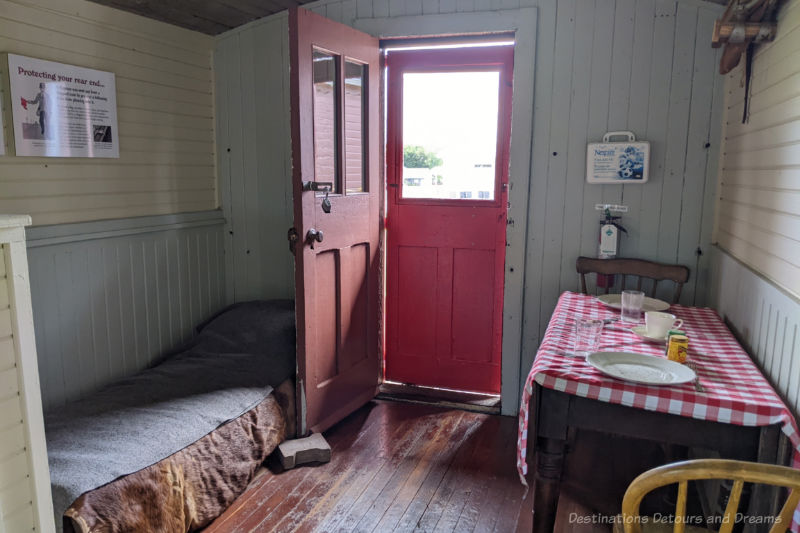
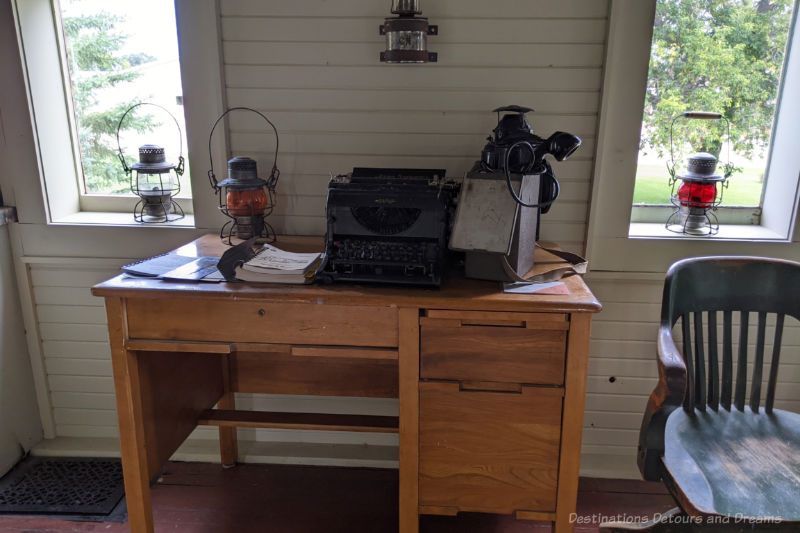
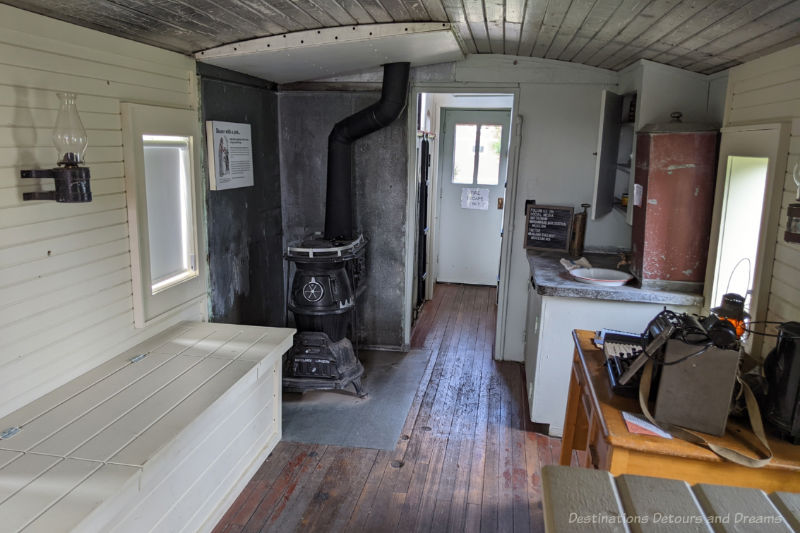
In the photo above, note the ring around the top of the stove to keep pots and pans from falling off.
Fallout Reporting Shelter
In the early 1960s, Canada launched a top-secret project to ensure national survival—the Nuclear Detonation and Fallout Reporting system (NDFRS). A network of 2000 Fallout Reporting Posts (FRPS) stretching coast-to-coast, NDFRS was designed to track the drift of radioactive fallout across the country in the wake of a nuclear attack. But the system was cancelled before it ever saw service, its shelters abandoned in place and soon forgotten.
One of those shelters had been located on what is now the grounds of the museum. A placard with the title “Cold War relic beneath your feet” marks the spot. The Miami FRP would have been manned by the station agent. On receiving an attack alert, volunteers would enter their FRPS and remain there for up to two weeks, taking radiation measurements every hour and relaying these to Filter Centres.
The original Miami bunker was exhumed after the Cold War. The bunker on display at the museum was salvaged from Moose Lake, Manitoba and restored. It is the same model as the one that existed in Miami.
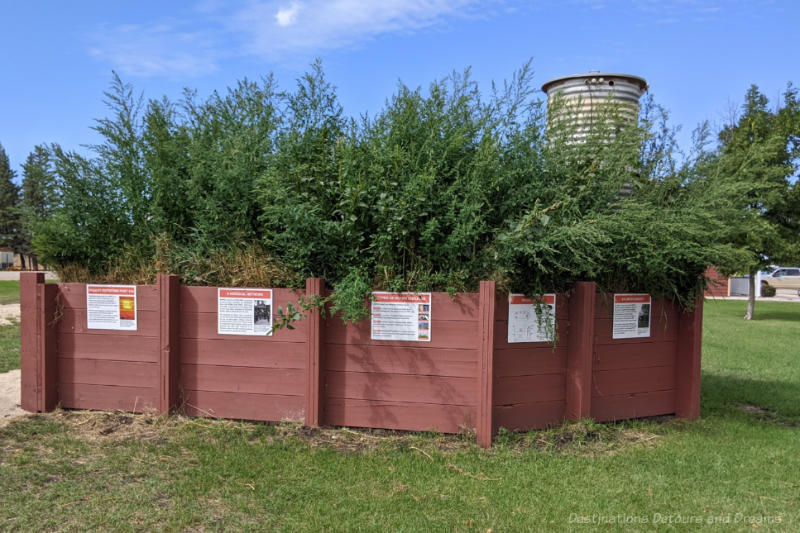
The bunker is set up above ground with plantings on top of it to recreate the underground look.
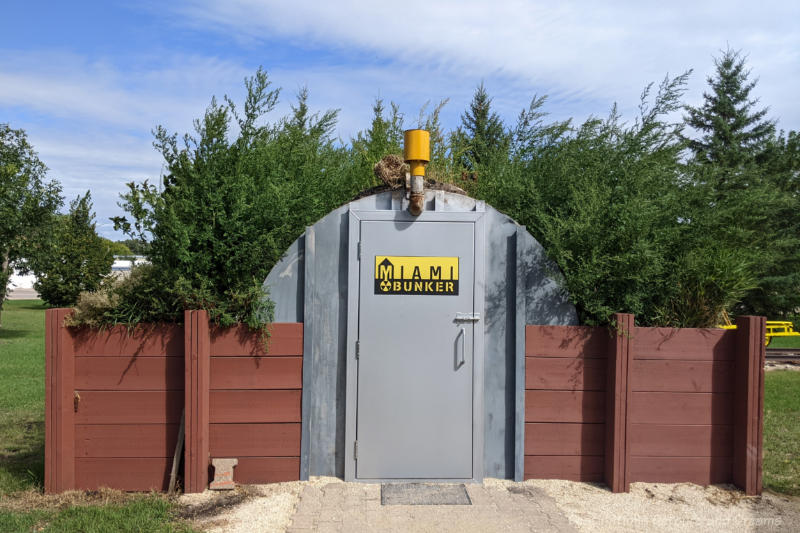
The ground level door into it for museum visitors would not have existed in the original bunker. Entry was via a ladder in a cylinder heading underground. The bunker certainly wouldn’t be a place for anyone with claustrophobia. My friend and I made sure the door stored open as we checked it out.
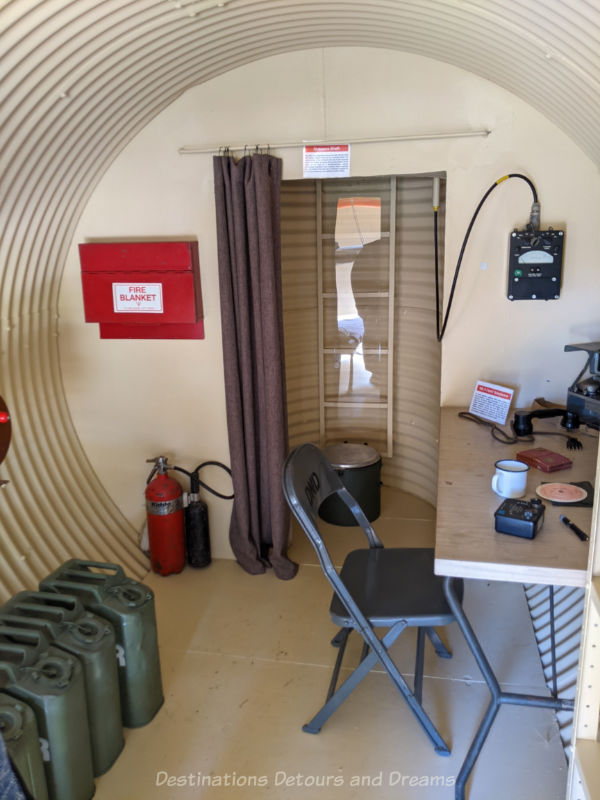

Signage at the museum provides information on the shelter and the NDFRS project. There is more information about NDFRS and the project to set up the shelter at the Miami Railway Museum on the museum’s website.
More About The Railway Station Museum and Miami
There is also a train shed on the museum grounds containing tools and equipment.
A placard inside a circular grassed area marks the spot where a water tower once existed. It came to a sudden end in 1980 when the tank burst and a tidal wave of water washed out the railway track and flooded part of the town’s main street. The tower had served steam engines as well as providing town water.
The Miami Railway Station Museum is well laid out and interesting. I was once again reminded of the many museum treasures to be found in small towns. Guided tours are available. You can also tour on your own. There is plenty of information included with the exhibits. A self-guiding brochure is available. Check the website for hours. They vary seasonally. Note that there are stairs to climb to get to the upstairs level of the station house and a few steps to get into the caboose.
The Miami Railway Station Museum is not the only museum in Miami. Located in a former church that has been added to, the Miami Museum preserves the history of the Rural Municipality of Thompson (where Miami is located). Exhibits are grouped by topic and include many relics and antique items, photographs, and newspaper clippings. The museum, which is open Wednesday through Sunday in the summer months, is also home to Sid the giant Mosasaur.
Sid is a Tylosaurus pembinenis, a unique species of mosasaur found only in the Manitoba escarpment between Morden and Miami, Manitoba. The species lived in the ancient sea that covered the area millions of years ago. Sid was found in the 1970s during Bentonite mining operations at a farm southwest of Miami and was named after farm owner Sid Cox. Although the found skeleton was nearly complete, only 35% of the original skull was recovered and preserved. Skull reconstruction work at the Canadian Fossil Discovery Centre in Morden, Manitoba involved 600 hours of highly skilled work, 3D scanning and printing, and other molding and welding work. The reconstructed skull and the complete skeleton are on display at the Miami Museum.
Sid is the second-largest mosasaur on public display. The largest is Bruce, displayed at the Canadian Fossil Discovery Centre in nearby Morden, Manitoba.
Fossils were first discovered in the Miami and Morden area in the 1930s during quarrying to mine bentonite. A placard at the Miami Railway Station museum entitled “Ticket to Ottawa for two sea monsters, please” talks about that discovery and the shipping of the fossil bones by train to Ottawa.
Never miss a story. Sign up for Destinations Detours and Dreams free monthly e-newsletter and receive behind-the-scenes information and sneak peeks ahead.
PIN IT
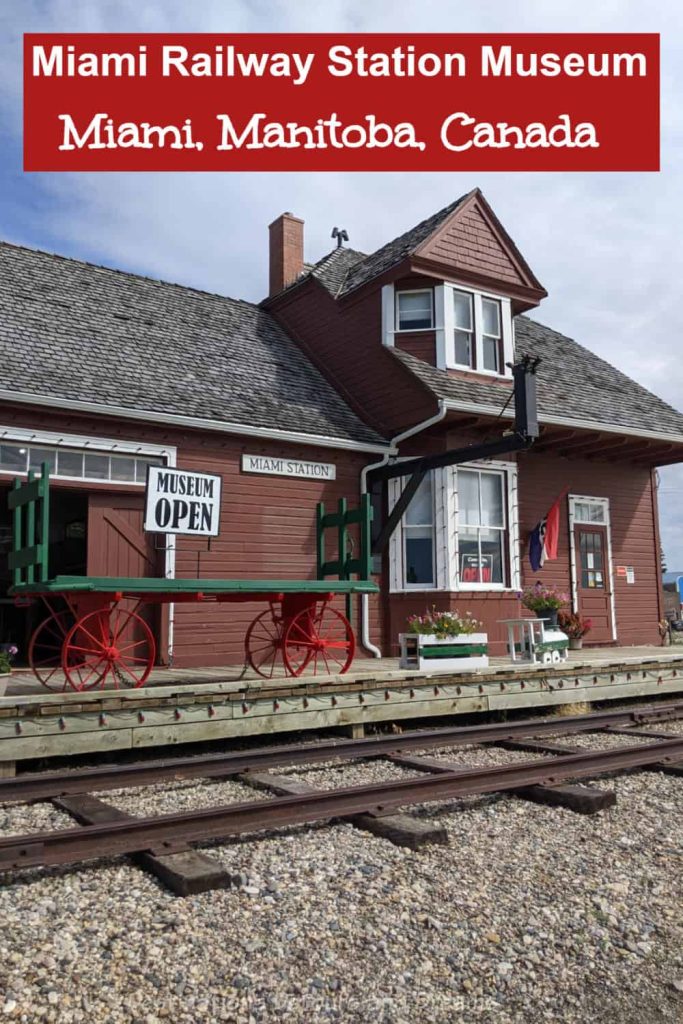
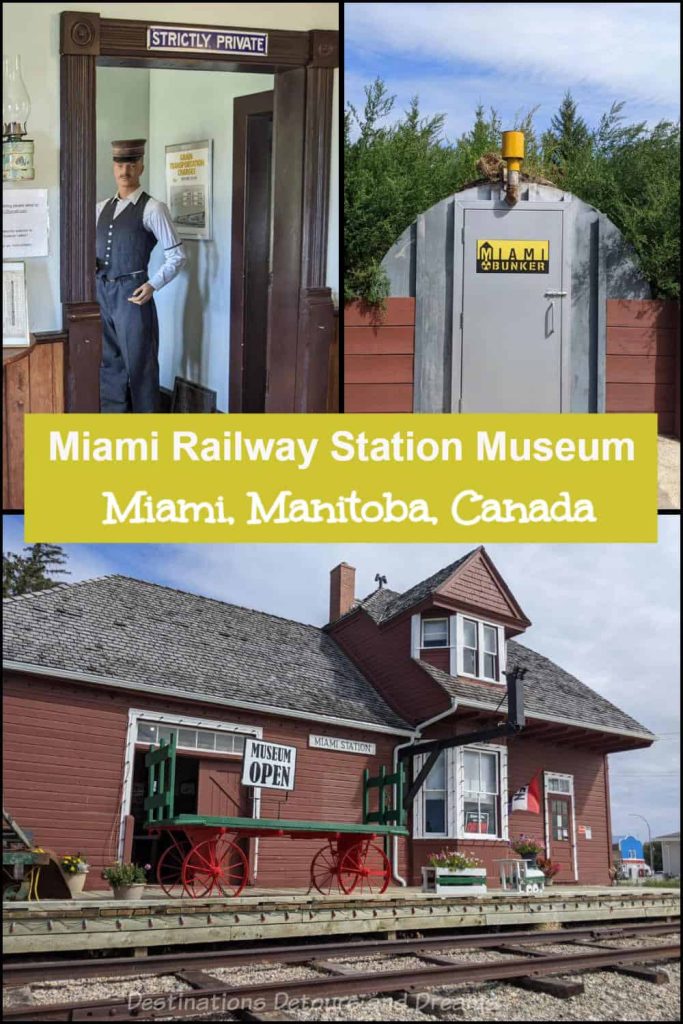



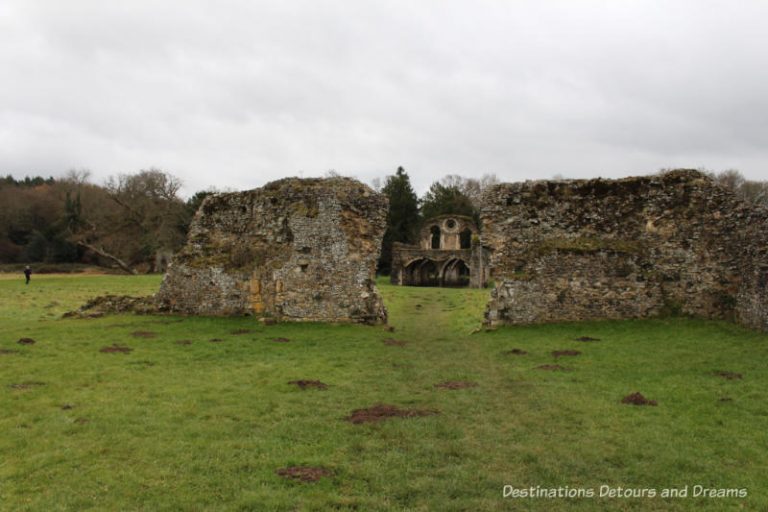

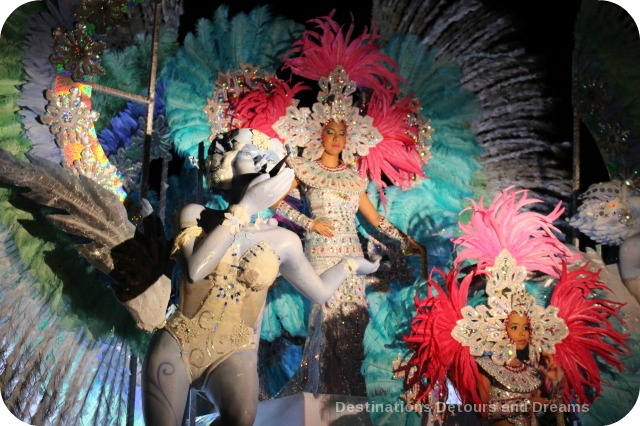
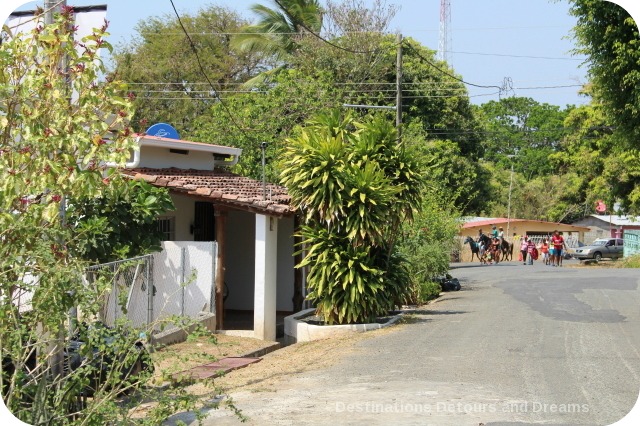
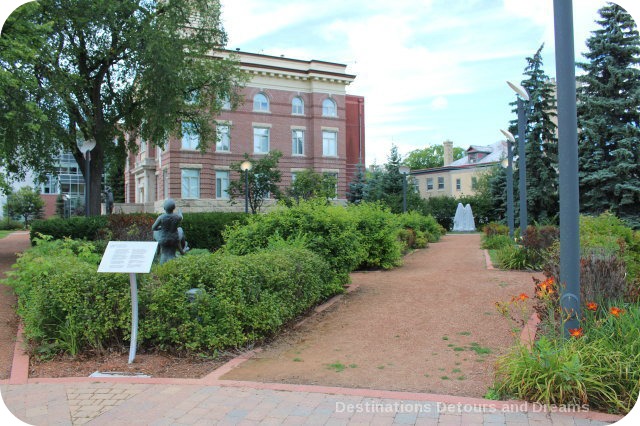
I’m fascinated by the do-it-yourself mail order houses. Like buying a house at IKEA, haha.
Ken, Yes the mail-order houses were a fascinating thing. Eaton’s started selling them in the early 1900s and stopped around 1931 or 1932.
I’ll have to add Miami, Manitoba, to my bucket list of Cold War bunkers to check out for the Cozy Mystery series I’m working on. Great article!
Linda, I think it is worth checking out. Interesting project and well-done museum. Your Cozy Mystery series sounds interesting.